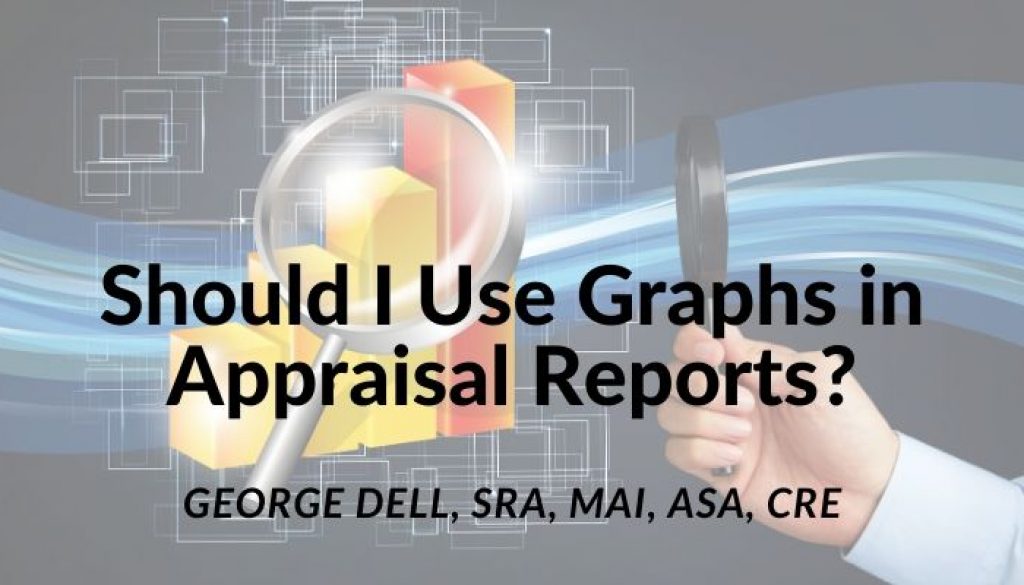Graphs and plots are good!
I have used graphs in my appraisal reports for many years. There are a number of advantages:
- One visual is worth many words.
- Properly done, they demonstrate competence.
- They are easy to create in open-source and for-money software.
- Analysis speed is improved.
- They focus on what is important to clients.
- They are visual and can be attractive.
There is only one disadvantage to the use of graphs in reports . . . Graphs can be misused. In classes, we often ask: Can you lie with statistics? Can you lie with a graph? Can you lie with words?
The one thing in common with statistics, graphs, and words is the source – the person telling. As explained in The Appraisal of Real Estate 14th (Appraisal Institute) – abuse usually falls into one or both of two categories: 1) overt attempts to mislead; or, 2) ignorance.
An important part of the Valuemetrics.info education is the proper use of graphs.
Mechanically, graphs are actually quite easy to create and paste into a report. The learning curve feels steep at first (as always), but once you have done a scatter graph a few times, you can create an attractive and relevant graph in literally seconds. Faster than trying to explain in words or statistics!
What is more challenging is competence in the right use of a graph. The right model. The right data. Competence is the opposite of ignorance.
The right use of a graph depends on one thing – the right data. As you might have guessed from the data science viewpoint – if you get the data right, all else follows smoothly. So how do you get the data right?
The first step is to decide on what is the purpose of your graph. Is it for exploring so you can understand and describe the selected data set? Is it for classifying the data into groups (like is it a comp or not?). Or is it for prediction to help you form a “supported” opinion of value?
To sum up:
- Graphs can make your job easier, and your reports more useful to clients.
- The tools to create graphs are relatively simple, with an easy learning curve.
- Proper use of graphs takes competence – in getting the right data, and the right model.

January 14, 2020 @ 12:53 pm
George, Thanks to you I have for years included multiple graphs, or charts as I call them, in every appraisal report for all the reasons you state. They are essential, as long as their data sets are intelligently and appropriately selected.
January 14, 2020 @ 9:11 pm
Like Michael, I also have been using GRAPHS, and their related Chart of sales that the GRAPH is built from – since 2008 – in every appraisal report. The ‘type’ and ‘process’ of producing these GRAPHS has changed over time. My current GRAPH is a Scatter Graph with both a linear and a polynomial trend line included. Those lines reveal much in terms of the underlying data that just a chart of sales won’t very easily. These help report users ‘see’ market activity in a simple, easy to understand, graphical presentation. George Dell is one of the key educators who has helped me understand how GRAPHS can be beneficial. A GRAPH is the visual presentation of the Chart of information used to produce the GRAPH.